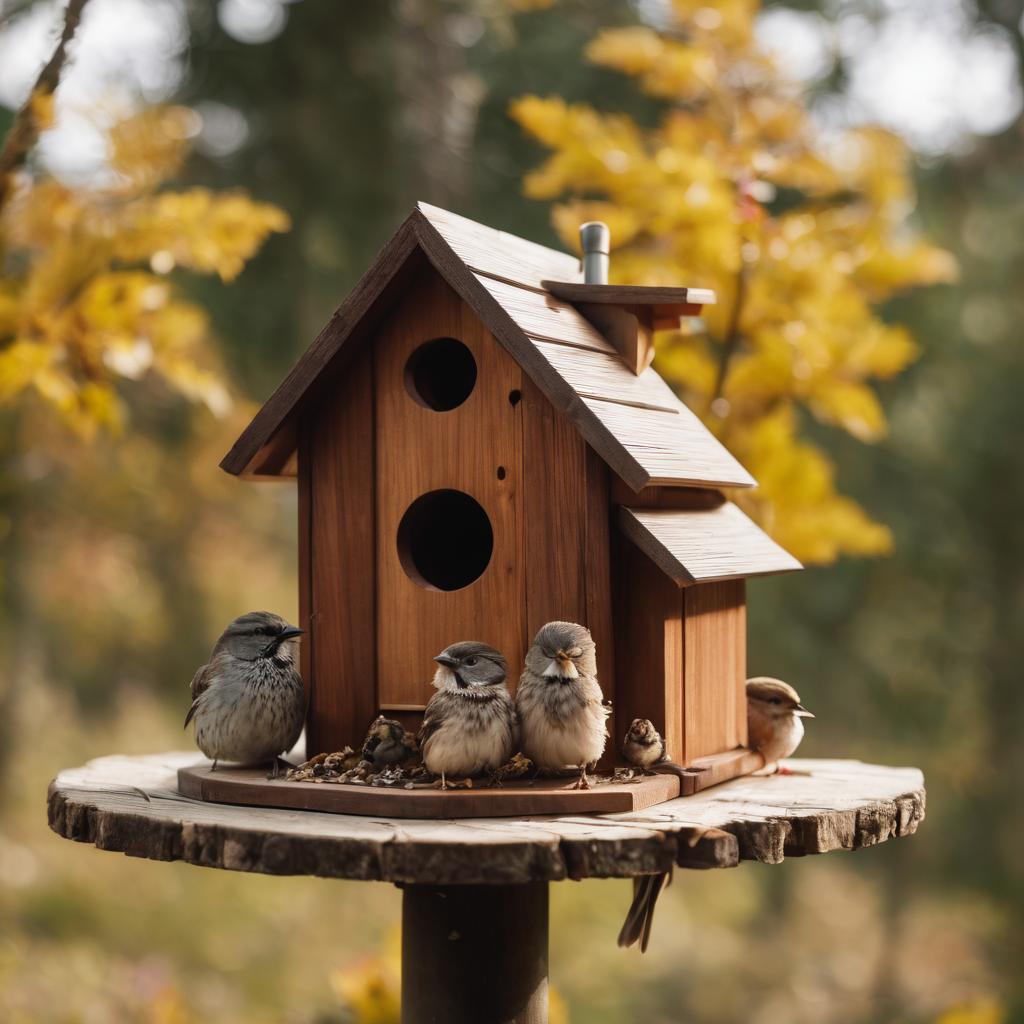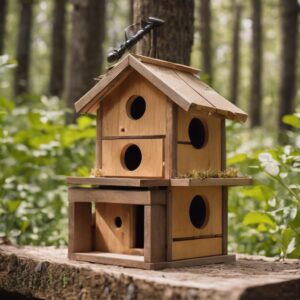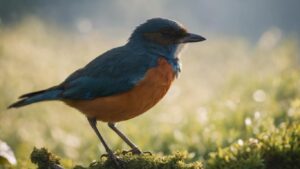
How to Attract Birds to Your Garden
Contents
- 1 Understanding the Importance of Bird-Friendly Gardens
- 2 Providing Adequate Food Sources for Birds
- 3 Selecting the Right Bird Feeders and Birdhouses
- 4 Choosing Native Plants to Attract Birds
- 5 Creating a Water Feature to Attract Birds
- 6 Providing Suitable Nesting Areas for Birds
- 7 Implementing Proper Bird Feeding Habits
- 8 Maintaining a Clean and Safe Garden Environment for Birds
- 9 Identifying Common Bird Species in Your Area
- 10 Contributing to Bird Conservation Efforts.
Understanding the Importance of Bird-Friendly Gardens
Bird-friendly gardens play a crucial role in nurturing the natural habitat of birds and promoting their well-being. These gardens are designed to provide a welcoming environment, attracting various bird species with elements that cater to their needs. By understanding the importance of creating bird-friendly gardens, we can contribute to preserving biodiversity and providing a safe haven for our feathered friends.
Birds not only add beauty and liveliness to our surroundings but also play a vital role in ecosystem functioning. They help with pollination and seed dispersal, which are essential for plant reproduction and the maintenance of healthy ecosystems. Additionally, birds are natural pest controllers, as they consume insects that can potentially damage our gardens. By establishing bird-friendly gardens, we create a balanced ecosystem where birds thrive, promoting a harmonious relationship between humans and nature.
Providing Adequate Food Sources for Birds
One of the key elements in creating a bird-friendly garden is providing adequate food sources for our feathered friends. Birds rely on various food sources to meet their nutritional needs, and by offering them a diverse range of options, we can attract and support a wide variety of bird species.
A garden filled with native plants that produce berries, seeds, and nectar can serve as a natural buffet for birds. Trees such as serviceberry, dogwood, and cherry are known to produce fruits that are relished by many bird species. Additionally, including plants like coneflowers, sunflowers, and goldenrods can provide seeds that birds can feed on during colder months. By strategically selecting plants that offer food at different times of the year, we can ensure a steady supply of nourishment for birds throughout the seasons.
Selecting the Right Bird Feeders and Birdhouses
Bird feeders and birdhouses are essential additions to any bird-friendly garden. When selecting the right bird feeder, it is important to consider the specific needs and feeding habits of the bird species you wish to attract. Different feeders cater to different types of birds, so it is crucial to choose the appropriate design and size. Tube feeders, for example, are excellent for attracting small birds like finches, while platform feeders are ideal for larger birds like cardinals. Additionally, selecting bird feeders made of durable materials, such as metal or heavy-duty plastic, ensures their longevity and resistance to harsh weather conditions.
Similarly, choosing the right birdhouse is essential for providing suitable nesting areas for birds. The size of the entrance hole should correspond to the specific bird species you are trying to attract. Smaller holes, for instance, are more suitable for wrens or chickadees, while larger holes are preferable for bluebirds or woodpeckers. Additionally, ensuring that the birdhouse offers adequate protection from predators and adverse weather is crucial. Features such as baffles or predator guards can be added to deter unwanted visitors and protect the nesting birds. By carefully selecting bird feeders and birdhouses that cater to the needs of different bird species, you can create an inviting and safe space that birds will flock to in your garden.
Choosing Native Plants to Attract Birds
Native plants play a crucial role in attracting birds to your garden. These plants have evolved in the local environment and are adapted to the specific climate, soil, and other conditions of your area. By choosing native plants, you are providing birds with a familiar habitat and a reliable source of food. Native plants also support local ecosystems, as they provide shelter for insects and other small creatures that birds feed on. Furthermore, these plants require less maintenance and are generally more resistant to pests and diseases, making them an excellent choice for any bird-friendly garden.
When selecting native plants, it is important to consider the different species of birds you wish to attract. Some birds prefer nectar-producing flowers, while others rely on berries, seeds, or insects. Research the specific preferences of the birds in your area and choose plants that offer a variety of food sources throughout the year. Creating a diverse landscape will not only attract a greater number of birds but also support a wider range of species, enhancing the overall biodiversity of your garden.
Incorporating native plants into your garden is a simple yet effective way to create an inviting habitat for birds. By providing an abundance of food sources, you can attract a diverse array of bird species, bringing beauty, joy, and a sense of serenity to your outdoor space. So, take a step towards connecting with nature and start planting native species today!
Creating a Water Feature to Attract Birds
A water feature can serve as a magnet for attracting a wide variety of bird species to your garden. Birds are naturally drawn to water sources for drinking, bathing, and preening their feathers. To create an effective water feature, it is important to consider both the size and design. A shallow basin with a gentle slope and rough edges will provide birds with easy access to water and a secure footing. Adding rocks or small stones to the basin can create additional perching spots for birds to rest and observe their surroundings. Frogs or fish can also be included in the water feature, providing an additional attraction for some bird species.
In addition to the design, it is crucial to keep the water in your feature fresh and clean. Stagnant water can quickly become a breeding ground for harmful bacteria and parasites that can be detrimental to birds’ health. Changing the water in your feature regularly, at least once a week, will help prevent the spread of diseases and ensure a hygienic environment for the birds. Installing a small pump or a cascading element can help keep the water moving, reducing the risk of mosquitoes breeding in it. By providing a clean and inviting water source, you are more likely to attract a diverse range of bird species to your garden.
Providing Suitable Nesting Areas for Birds
Birds require suitable nesting areas to breed and raise their young. Creating a diverse and welcoming environment in your garden can provide these crucial habitats. One way to do this is by providing a variety of nest boxes or birdhouses. These structures mimic natural cavities in trees and offer safe spaces for birds to build their nests. When selecting birdhouses, it is important to consider the specific needs of different species. Varying the size of the entrance hole, for example, can help attract different types of birds. Additionally, ensuring that the birdhouses are securely mounted and positioned in a quiet and undisturbed area will further encourage nesting.
In addition to nest boxes, offering natural materials for nesting can also be beneficial. This can include leaving fallen leaves, twigs, and small branches in an accessible area of the garden. These materials can be used by birds to construct their nests, providing them with the necessary resources for successful breeding. It is important to regularly replenish these materials, especially during nesting seasons when there is high demand. Ensuring there is a steady supply will not only attract birds to your garden but will also contribute to their overall nesting success.
Implementing Proper Bird Feeding Habits
Bird feeding can be an enjoyable and rewarding activity that not only attracts a variety of beautiful birds but also helps to support their survival. However, it is essential to implement proper bird feeding habits to ensure the health and well-being of these avian visitors.
First and foremost, it is important to provide a consistent and reliable source of food for the birds. This means regularly filling and maintaining bird feeders with fresh and appropriate birdseed. Different species of birds have different dietary needs, so it is crucial to choose a quality birdseed mix that caters to the specific birds you wish to attract. Additionally, it is advisable to avoid feeding birds with bread, as it lacks the necessary nutrients for their diet and can lead to health problems. By providing a steady supply of nutritious food, you can create a safe and inviting feeding spot for birds to enjoy.
Maintaining a Clean and Safe Garden Environment for Birds
Birds are attracted to clean and safe environments, so it is essential to maintain a garden that provides them with a healthy habitat. Regular cleaning of bird feeders is crucial to prevent the spread of diseases among birds. Ensure that you clean and disinfect the feeders on a regular basis, using mild soap and water. This will help remove any accumulated dirt, mold, or bacteria that could harm the birds. Additionally, it is important to keep the surrounding area of the feeders clean, clearing away any fallen seeds or debris that may attract pests or predators.
Another aspect to consider for a safe garden environment is to avoid using pesticides or harmful chemicals in your garden. Birds often forage for insects and other invertebrates in the garden, and exposure to pesticides can have detrimental effects on their health. Instead, opt for natural methods of pest control or use organic alternatives. Furthermore, it is crucial to keep the garden free from litter and other potential hazards that could injure or entangle birds. Regularly inspect the area for any loose wires, sharp objects, or tangled vegetation that may pose a threat. By maintaining a clean and safe garden environment, you can provide a welcoming space for birds to thrive and flourish.
Identifying Common Bird Species in Your Area
Birdwatching is a popular hobby for many nature enthusiasts, enabling them to appreciate the diversity of bird species in their local areas. By learning to identify common bird species, individuals can gain a deeper understanding of their natural surroundings. It is important to note that every area has its own unique bird populations, influenced by factors such as geographical location and habitat diversity.
When identifying birds, it is helpful to focus on key features such as size, shape, coloration, and behavior. Many field guides and online resources are available to aid in the identification process, providing detailed descriptions and photographs of various bird species. Additionally, joining local birdwatching groups or participating in guided walks can offer valuable opportunities to learn from experienced birdwatchers and develop identification skills. As you become familiar with the specific birds in your area, you will begin to appreciate their distinct characteristics and the intricate role they play in the local ecosystem.
Contributing to Bird Conservation Efforts.
Bird conservation efforts are crucial to protect and preserve the diverse avian species across the globe. There are various ways in which individuals can actively contribute to bird conservation. One effective step is to support local bird conservation organizations and initiatives. These organizations work tirelessly to safeguard bird habitats, conduct research on threatened species, and educate the public about the importance of bird conservation. By donating to or volunteering with these organizations, individuals can play a role in safeguarding the future of birds and their ecosystems.
Another way to contribute to bird conservation efforts is by participating in citizen science programs. These programs allow bird enthusiasts of all levels to contribute valuable data that helps researchers better understand bird populations and their behavior. Whether it’s participating in bird counts, documenting bird sightings, or tracking migration patterns, citizen scientists provide vital information that helps shape conservation strategies. By getting involved in these programs, individuals can actively contribute to the scientific understanding of birds and contribute to their conservation in a meaningful way.



Average Rating